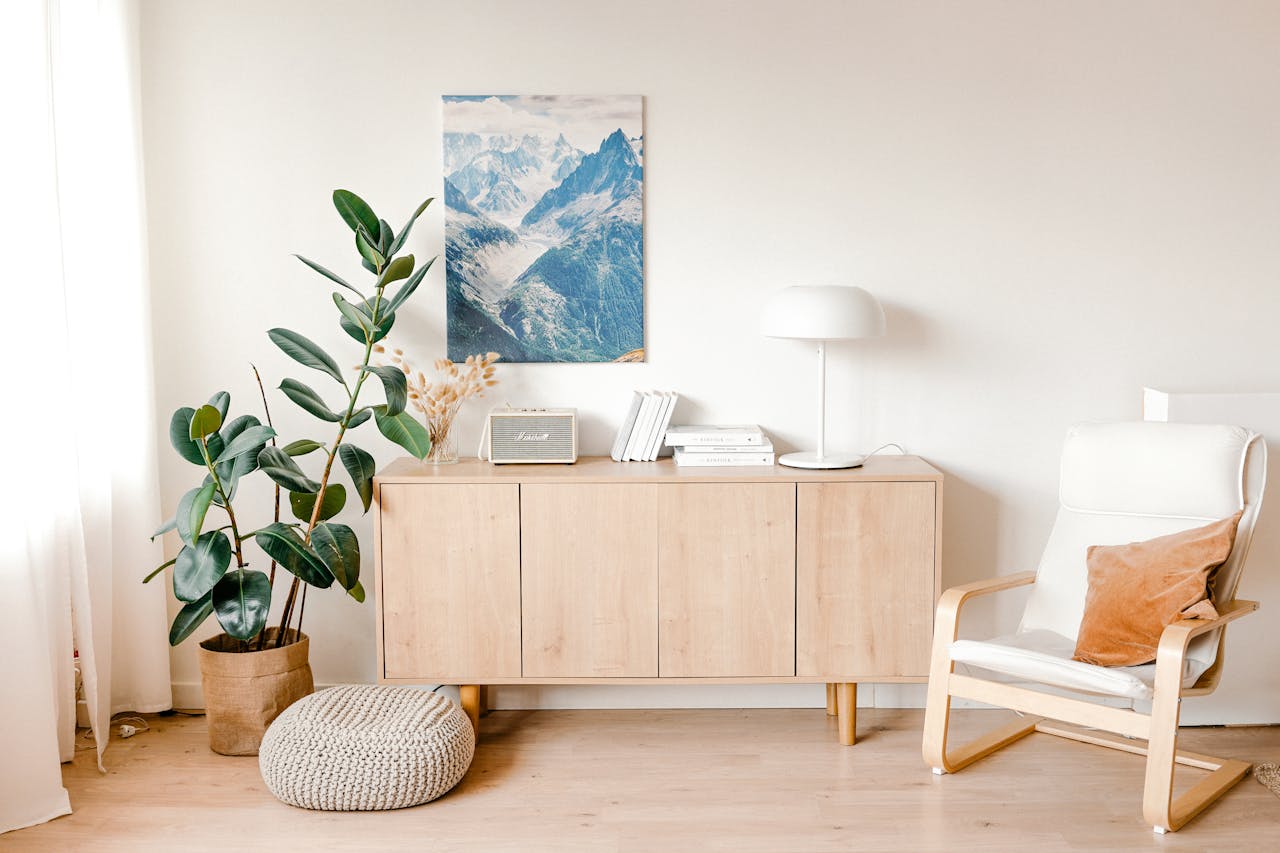A Beginner's Guide to Feng Shui

Feng Shui, an ancient Chinese practice, is all about creating balance and harmony in your surroundings to support your well-being, prosperity, and overall energy. Whether you're looking to refresh your living space or attract more positivity into your life, Feng Shui can be a powerful tool. Here's a simple guide to get you started.
What is Feng Shui?
Feng Shui (pronounced "fung shway") translates to "wind" and "water." It's based on the idea that your environment affects your energy, also known as chi or qi. By organizing your space in certain ways, you can encourage the flow of positive energy and minimize obstacles in your life.
The Core Principles
1. Chi (Qi) — The Energy Flow
Chi is the vital life force that flows through all things. In Feng Shui, the goal is to create a smooth and balanced flow of chi through your space. Clutter, sharp angles, and disorganized rooms can block or disturb chi.
2. The Five Elements
Feng Shui uses five elements — Wood, Fire, Earth, Metal, and Water — to create balance. Each element represents different qualities and can be introduced through colors, shapes, or actual materials.
| Element | Meaning | Examples |
|---|---|---|
| Wood | Growth, creativity | Houseplants, wooden furniture, floral patterns |
| Fire | Passion, transformation | Candles, lamps, red pillows, fireplace |
| Earth | Grounding, stability | Terracotta pots, square rugs, stone objects |
| Metal | Focus, precision | Mirrors, metal frames, silver or gold decor |
| Water | Flow, intuition | Fountains, aquariums, glass decor, wavy shapes |
3. The Bagua Map
The Bagua is an energy map used to analyze the energy in your space. It divides a space into nine sections, each representing a different life area such as wealth, health, relationships, and career. By aligning the Bagua map with your floor plan, you can enhance specific areas of your life.
| Bagua Area | Life Aspect | Examples of Enhancements |
|---|---|---|
| Wealth & Prosperity | Finances | Purple accessories, a money plant |
| Fame & Reputation | Recognition | Red artwork, awards displayed |
| Love & Relationships | Partnerships | Pairs of items (candles, chairs), pink or red decor |
| Family | Health, heritage | Family photos, green elements |
| Center | Balance & well-being | Open space, earthy colors |
| Creativity & Children | Innovation | Art supplies, whimsical decor |
| Knowledge & Self-Cultivation | Wisdom | Books, blue tones, meditation corner |
| Career | Life path | Flowing water images, black decor |
| Helpful People & Travel | Mentorship | Travel souvenirs, grey or silver tones |
Simple Feng Shui Tips for Beginners
1. Declutter Your Space
Start by clearing out unnecessary items. A clutter-free space encourages a smooth flow of chi and makes you feel lighter and more focused.
Examples:
- Clear your nightstand of excess items.
- Clean out that "junk drawer" in your kitchen.
2. Let the Light In
Natural light uplifts energy. Open windows when possible and use mirrors to reflect light and expand the space visually.
Examples:
- Use sheer curtains to maximize natural light.
- Hang a mirror opposite a window to reflect light deeper into the room.
3. Position Your Bed and Desk Wisely
Place your bed and desk in a "command position" — ideally facing the door, but not directly in line with it. This positioning gives a sense of control and stability.
Examples:
- Move your bed so you can see the door without your feet pointing directly at it.
- Angle your desk slightly to see the entrance while working.
4. Add Healthy Plants
Plants bring the wood element and symbolize growth and vitality. Choose easy-care plants like:.
- Jade plant (symbol of wealth)
- Lucky bamboo (growth and flexibility)
- Peace lily (cleansing and harmony)
5. Balance the Five Elements
Make sure all five elements are represented in your home. This doesn't need to be literal — for example, a red candle can represent fire, while a wavy sculpture can symbolize water. Use blue in the north (career) area for better focus and decorate the northeast (knowledge) area with earthy tones for better study or meditation.
6. Fix What's Broken
Leaky faucets, creaky doors, or malfunctioning electronics create stagnant energy. Repairing them helps restore balance and flow.
Examples:
- Replace a flickering lightbulb.
- Fix a squeaky door or leaky faucet.
- Toss or repair a broken chair.
7. Create a Welcoming Entryway
Your front door is called the Mouth of Chi. Keep it inviting.
Examples:
- Sweep the front steps and keep them clear.
- Add a new welcome mat and a healthy plant on either side.
- Make sure the doorbell works.
Final Thoughts
Feng Shui doesn't require a total home makeover. Even small adjustments can make a noticeable difference. The key is to observe how your space makes you feel and to make changes that promote comfort, peace, and positivity.
Remember, Feng Shui is as much about intention as it is about placement. When you design your space with care, you invite harmony into your life.
Most importantly, trust your intuition — if something feels "off," it probably is. Feng Shui is about creating a space that reflects and supports you.
Published 4/24/25